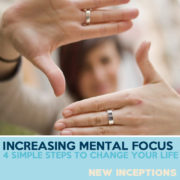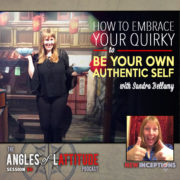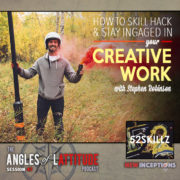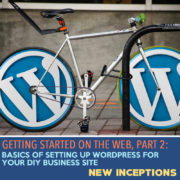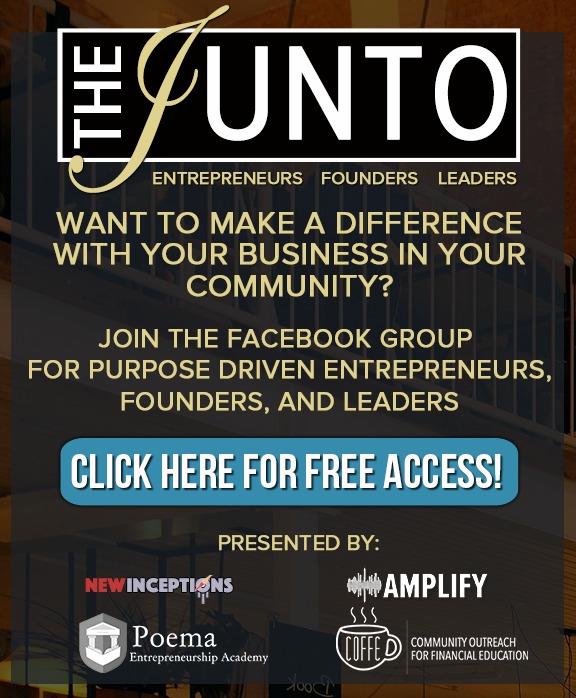Increasing Mental Focus – 4 Simple Steps that Can Change Your Life
Last Week I talked about how you can get more life satisfaction. There’s multiple reasons why someone would want more life satisfaction. With that post, I simply jumped into the how to of getting it started.
In today’s topic, we’re going to dive a little deeper into two of the 4 tactics mentioned in the previous post. Specifically, long term goals and having a growth mindset.
Here’s the thing, while you’re pursuing a long term goal, you’re going to grow as a person. There’s no doubt about it.
However, to do that growing AND achieve those goals, you’re going to have to put in a ton of work.
And to get that work done, you’re going to have to focus.
We All Make Choices
If you’re like me and many people I know, you probably have a busy life. For the most part, going to work takes up a ton of our time. If you have kids, that’s another layer of stuff you gotta do. And if you have extended family – there’s even more stuff you got to manage time for. And let’s not forget all the social things we might be a part of. Gaming, sports groups, you name it.
With all these things that we have to do on a daily basis, it’s hard to imagine how anyone has ever successfully done anything meaningful in their life after entering the workforce.
Seriously, who has the time?
Here’s the answer: You do.
“But how?”, you might be wondering.
We all have time. Everyone has 24 hours a day. Everyone has always had and always will have 24 hours a day.
We all make choices in how we’re going to spend our 24 hours.
Here’s a few that I’ve had to make in the past:
- Go to a workplace that requires us to be there 7, 8, or even more hours per day.
- Go to school and do the homework for the classes.
- Be part of a sports team.
- Go to the gym.
- Keep working on that character in that video game.
- Watch or hear that particular show so we have something to talk with people about.
- Have friends or family that wants to hang out when we’re not doing work.
- Sleep.
Many of these choices are things that “busy” people are probably already doing most (if not all) of. However, just because we’re busy doesn’t necessarily mean we’re being productive. And it sure as hell doesn’t mean we’re being satisfied by our lives. I could and will argue that many of these above choices can be distractions.
Most of our Satisfaction in Life Comes from Mental Focus in Working Towards Something
Outside of hanging out with friends and family, there are few things that give us all satisfaction.
Sure you might get some temporary satisfaction in playing games, watching shows, or getting that paycheck from your job. But again, I could argue those things are possibly examples of time that could be used more productively. Especially, if a person is interested in building a more satisfied life.
It’s not that we haven’t used mental focus before. You might have previously focused in school, sports, military… and even, believe it or not, playing video games.
Many would say that video game players are lazy – but they are as dedicated to their craft. Just as much as those who are focused on getting their degree, throwing a ball, or knowing what to do during an emergency situation.
Here’s Cam’s take on it:
In all four of these examples, we feel satisfied because we feel that the work that we’re performing is being put towards building something.
If it doesn’t require mental focus or we don’t feel like we’re building something, then there’s a good chance we’re not going to get satisfaction from the time, resources, or work we spend on a given activity.
Increasing Mental Focus:
So, how do we spend more of our time utilizing our mental focus towards building we care about?
1. Prepare for Prolonged Focus
The first part of being able to successfully focus on something we want to do is give ourselves the ability to actually focus.
If you’re the type of person runs on caffeine all day and doesn’t do much physical activity – that needs to change. You don’t want your body having to rely on caffeine to perform day in and day out – which can happen.
Also, stay hydrated. Personally, this is one that I struggle with myself. I know I don’t drink enough water. Having grown up on all kinds of sodas, juices, and other sugary drinks, I’ve never been able to make drinking water a part of my routine. So if you’re like me, make sure that you’re figuring out other ways of getting your water in. For me, I’ve become a tea-aholic!
One other way to prepare for prolonged focus is by making sure you get plenty of sleep. Seriously.
7 or 8 hours is what we should be shooting for. That means if you’re planning on getting up at 5 or 6 in the morning, you’ll be wanting to go to bed at 9 or 10pm at the latest.
2. Choose Your Most Important Tasks
Once you are rested up and have something to drink near you, you’ll be ready to get going. But before we do, we need to make sure we’re aware of the tasks that we want to do that particular day.
I’ve talked about how important it is to properly plan the tasks you want to get done that week and month. When it comes to doing something in a particular day, all we want to do is 1 to 3 things.
For example, I keep it simple by focusing on writing on Monday, podcast editing on Tuesday and podcast publishing on Wednesday. The rest of the time is committed to marketing, meetings, and specifically on Thursday and Friday, I try to learn and utilize new skills and systems to help with the other days.
3. Clear Space for Focused Work by Getting Rid of Distractions
Distractions come in all sizes. Having a dead end or uninteresting job, playing videogames or watching TV for 4 or more hours a day, or endlessly scrolling through social media or answering emails are examples of distractions.
The difference between distractions and other activities is that distractions are activities that aren’t helping you reach your goals or enriching your life.
If you’re having problems figuring out what the distractions in your life are, then think about the things you do that others would consider a waste of time or you personally feel is “a grind”.
Your job might literally drain you and stress you out. This might grounds to look for another job.
If you feel like you have to play video games “like a job”, then figure out something else to spend your time on. Maybe you feel like you have to be on all the social media platforms that your friends are on. If this is the case, then just pick one and let them know they can actually call you if they need something.
The goal with this step is to make sure we are not being interrupted when we actually sit down and do activities that are meaningful. If you need more help with distractions, here’s a post for more info.
If you want to start small but have some really drastic changes in this department, here are three things you can do today:
- Don’t multitask. No one can multitask and if they say they can, they’re still living in the year 2000.
- Turn off notifications on your phone and computer
- Do not connect to social media or other things until your main tasks are done.
- Don’t leave email going all day. Check it twice – preferably mid-morning and before you’re done for the day. DO NOT check it first thing!
4. Get in the Zone – Your Zone
Being busy is something that many of us have grown up believing is the key to success. And the truth is that, being busy is often times a sign that a person isn’t in control of their lives. The busier someone is or seems to be, the more they’re probably at the call of someone else.
So the goal, believe it or not, is to not for you to appear busy all the time. Instead it’s to actually be doing something when you’re wanting to do it and committing to that action. This will get you “in the Zone” or “in flow”. When you’re in flow, you won’t have to worry about others perceiving you as being busy because you will be and the more times you get there, the longer you’ll be able to stay there.
Being in flow for long periods of time is called Deep Work or Slow Working. Interestingly, this type of work yields better results in the long run.
If you’re not used to doing work for a long period of time, shoot for at least a half an hour sprint. And then work your way up to longer periods of time. The goal is to train your mind like a muscle. Ideally you’ll be able to spend enough time in a deep work mode that you’ll be able to finish the task at hand before you need a break.
However, you need to take breaks from time to time. So make sure you do take that lunch hour and walk around for a few minutes every hour or so.
If your current job prevents you from going into the zone on a regular basis, you might want to consider finding another job. I personally believe that being able to be in flow is a vital part of having job satisfaction.
If you’ve never had a job that will allow you to get there, then that might be a sign that it’s time for you to start your own business. This will give you a way to do something you like to do in a way that you will like doing it.
Ending Thoughts
I hope that this post gives you a clearer sense of what focus and subsequently, your work life, should be like. If you believe that you’re not being able to clearly focus on your job or in your business, then it might definitely be time to change some things up.
Lack of focus will cause you unneeded stress. Period. With so many options and opportunities in the world today, it’s just not smart to strap yourself to a particular group of coworkers or a paycheck with a particular name on it.
That might have been expected with the Baby Boomers, but even they know that things are changing quickly. (For a great discussion on this topic, check out my discussion with Dr. Joe Albano)
Your goal is to not look at a job as “working for” a particular company. It’s to look at a job as “working with” them. If you can’t find the partnership you seek in your current industry, you owe it to yourself to find that partnership elsewhere – even if it means starting your own business.
Word of advice: Don’t expect for your current company to change for you. Just because you might be starting to find your own goals in life, doesn’t mean your current place of employment agrees with those goals.
You might have to move. But that’s ok, because you don’t want to work at a place you’re not appreciated.
If you find yourself looking for a new job, do your due diligence when you’re interviewing and find out if the position truly works for you along with the goals and culture of the company that you’ll be working with.

